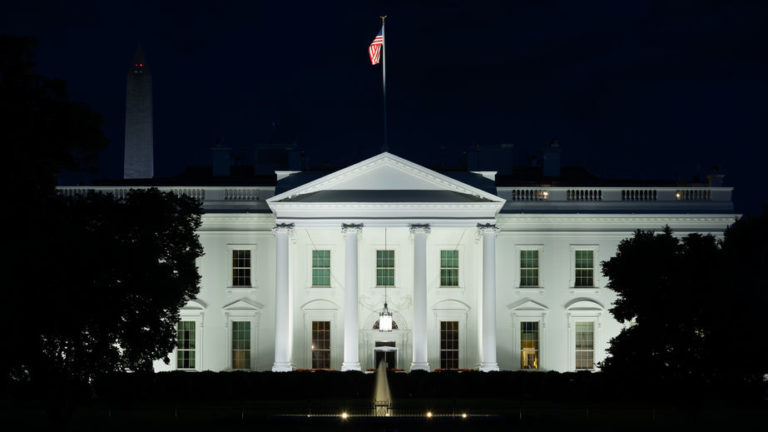By MICHAEL TAVOLIERO
Alaska’s government no longer serves its people
Alaska has always stood for independence, resourcefulness, and self-reliance. But today, Alaskans are not in control of their state. Instead, a network of entrenched bureaucracies, corrupt agencies, clueless legislators, and outside special interests dictate how elections are run, how resources are used, and even how Alaskans live their daily lives.
This is controlled by a state budget process which corrupts the Alaskan government with billions of dollars and produces an unnecessary welfare state.
A twisted mockery of justice—where power isn’t earned by integrity but bought with special interest bankrolls. In this upside-down reality, the Golden Rule is rewritten: Those who hold the gold make the rules.
This is not by accident. It is by design.
Washington, D.C., along with state-level bureaucrats, legislators and politically connected organizations, have deliberately built a system that serves their interests—not the interests of Alaskans.
The solution: Dismantle bureaucratic control
To restore accountability, Alaskans must eliminate local, state and federal taxpayer-funded money laundering, strip excessive government power, and return decision-making to the people.
Step 1: Abolish agencies that block energy independence
Alaska is energy rich but remains shackled by federal and state regulations that stifle drilling, mining, and infrastructure projects.
Agencies to dismantle or reform:
- Alaska Energy Authority (AEA) – Wastes funds on politically driven green initiatives that fail to lower energy costs.
- Alaska Center for Energy and Power (ACEP) – Focuses on securing grants rather than delivering real-world energy solutions.
- Other agencies to evaluate – Alaska Department of Environmental Conservation (ADEC), Alaska Oil and Gas Conservation Commission (AOGCC), Alaska Department of Natural Resources (ADNR), Alaska Department of Fish and Game (ADF&G), and Alaska Industrial Development and Export Authority (AIDEA).
Solutions:
- Ensure permitting decisions are made by elected officials rather than unelected bureaucrats influenced by external agendas.
- Limit AEA and ACEP’s influence over regulatory decisions, ensuring they serve as advisory and research bodies rather than gatekeepers of development.
- Eliminate state subsidies for politically driven green energy programs that do not provide cost-effective benefits for Alaskans.
Alaska must reclaim control of its energy resources.
Step 2: Defund the election manipulation bureaucracy
The biggest threat to Alaskan democracy isn’t voter fraud—it’s state-controlled election manipulation.
Agencies to Dismantle or Reform:
- Alaska Division of Elections (DOE) – Facilitates Ranked-Choice Voting (RCV), benefiting establishment candidates.
- Alaska Public Offices Commission (APOC) – Fails to prevent dark money while protecting political elites.
- Alaska Division of Legislative Audit (DLA) – Selectively shields corruption while targeting political adversaries.
- Other agencies to evaluate – Alaska State Legislature, Alaska Judicial System, Department of Public Safety, and Alaska Industrial Development and Export Authority (AIDEA).
Solutions:
- Ban state agencies from changing election policies without a public vote.
- Require full transparency for out-of-state campaign donations.
- Pass voter ID laws and enforce strict ballot chain-of-custody rules.
Alaskans—not bureaucrats or special interests—should control elections.
Step 3: Dismantle the education bureaucracy
Alaska’s public education system does not serve students; it serves teachers’ unions and political interests.
Agencies to eismantle or reform:
- Alaska Department of Education & Early Development (DEED) – Implements federal policies that do not align with Alaskan values.
- Alaska State Board of Education – Enforces top-down curriculum mandates.
- Alaska Commission on Postsecondary Education (ACPE) – Adds unnecessary bureaucratic layers to financial aid.
- Local School District Administrative Bodies – 54 school districts exist largely for bureaucratic self-preservation.
- Alaska Professional Teaching Practices Commission (PTPC) – Abolishing PTPC allows for local teacher oversight and flexibility.
- University of Alaska System – Must be audited for financial mismanagement and undue external influence.
- Other agencies to evaluate – Alaska State Legislature, Alaska Mental Health Trust Authority, Department of Natural Resources, Housing Finance Corporation, State Council on the Arts, Workforce Investment Board, and Commission for Human Rights.
Solutions:
- Pass universal school choice and competitive education, allowing education funds to follow students.
- Eliminate bureaucratic mandates, restoring curriculum control to local communities.
- Repeal Title 14 and abolish all school districts and replace with the Alaska Education Freedom and Local Control Act which decentralizes education by eliminating bureaucratic oversight, directing funding to parents through Education Savings Accounts (ESAs), expanding school choice, and ensuring curriculum decisions are made at the local level—empowering families, improving educational outcomes, and reducing government waste.
- Ban federal education funding with ideological conditions.
Alaska’s schools should teach how to think—not what to think.
Step 4: Reclaim land and resource control
Over 60% of Alaska’s land is federally controlled, and state agencies collaborate with Washington to restrict land use, hunting, and development.
Agencies to Dismantle or Reform:
- Alaska Department of Natural Resources (DNR) – Continue to streamline its permitting processes, environmental oversight, and balance development of state lands for the benefit of Alaskans.
- Alaska Department of Fish and Game (ADF&G) – manage Alaska’s natural resources for the benefit of all Alaskans.
- Other Agencies for Evaluation – Alaska Department of Environmental Conservation (ADEC), Alaska Oil and Gas Conservation Commission (AOGCC), Alaska Department of Commerce, Community, and Economic Development (DCCED), Alaska Industrial Development and Export Authority (AIDEA), Alaska Department of Transportation and Public Facilities (DOT&PF), Alaska Department of Revenue (DOR), Alaska Department of Administration (DOA), and Alaska Department of Law (DOL).
Solutions:
- Pass a Land Sovereignty Act to prevent federal agencies from unilaterally seizing or restricting Alaska’s land and resources without explicit state approval, ending backdoor deals that undermine local control.
- Expand private land ownership opportunities to break the bureaucratic stranglehold that keeps vast areas of Alaska locked away from responsible development, resource use, and community growth.
- Strip DNR of its ability to enforce federal environmental policies, preventing it from acting as a local enforcer for Washington’s anti-development agenda and restoring its duty to serve Alaskans, not federal regulators.
- End bureaucratic stalling and forced dependency by immediately convening meaningful negotiations between Alaska Native communities, sport hunters, and commercial interests—resolving land-use disputes through transparent agreements rather than indefinite delays that serve only to maintain federal and bureaucratic control.
Alaskans—not Washington bureaucrats—should control Alaska’s land.
Step 5: Reform or dismantle Alaska’s health bureaucracy
Alaska’s healthcare system is burdened by inefficiency, regulatory delays, and high costs driven by bureaucratic mismanagement.
Agencies to dismantle or reform:
- Alaska Department of Health (DOH) – Fails to control Medicaid costs, creating an unsustainable financial burden.
- Department of Commerce, Community, and Economic Development (DCCED) – Licensing delays contribute to healthcare provider shortages.
- Alaska Mental Health Trust Authority (AMHTA) – Lacks transparency in spending and program effectiveness.
- Other agencies to evaluate – Division of Health Care Services (DHCS), Health Facilities Licensing and Certification Unit, Office of Children’s Services (OCS).
Solutions:
- Audit and reform Medicaid to prioritize direct patient care over administrative waste.
- Streamline licensing to get more doctors and healthcare providers into the system.
- Encourage private-sector competition to lower costs and improve services.
- Redirect mental health funds to real-time crisis intervention services instead of administrative overhead.
Step 6: Reform or dismantle Alaska’s welfare bureaucracy
Alaska’s welfare system is managed by agencies that fail to efficiently deliver assistance.
Agencies to dismantle or reform:
- Alaska Department of Health (DOH) – Administers Medicaid, public health initiatives, and various welfare programs.
- Alaska Department of Family and Community Services (DFCS) – Needs oversight for child welfare programs.
- Division of Public Assistance (DPA) – Administers financial aid programs like Alaska Temporary Assistance Program (ATAP).
- Alaska Housing Finance Corporation (AHFC) – Bureaucratic inefficiencies delay housing assistance.
- Other agencies to evaluate – Department of Labor and Workforce Development (DOLWD), Advisory Board on Alcoholism and Drug Abuse, Commission on Aging, Mental Health Board, Disabilities & Special Education Council, and Statewide Suicide Prevention Council.
Solutions:
- Streamline administrative processes to reduce delays in assistance.
- Improve accountability through audits and public reporting.
- Shift programs to community-driven initiatives.
Final Step: Restore power to the people
Alaska’s deep-state bureaucracy must be dismantled. Every agency that serves special interests instead of citizens must be reformed or abolished.
The Alaska State Constitution’s Declaration of Rights states:
“All political power is inherent in the people. All government originates with the people, is founded upon their will only, and is instituted solely for the good of the people as a whole.”
The government exists to serve Alaskans—not to rule over them. The time to reclaim Alaska is now.
Michael Tavoliero writes for Must Read Alaska. Stay tuned for Parts II and III of this series, later this week.















